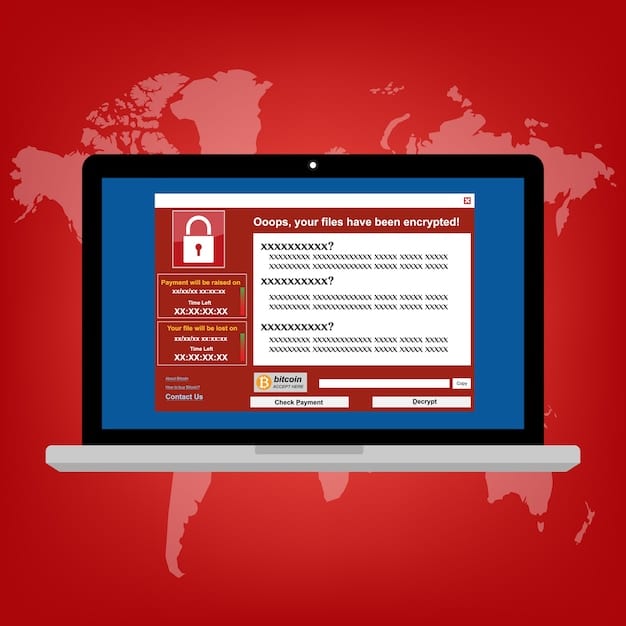Remote Work Policies: Best Practices for 2025

Remote Work Policies: Best Practices for Managing a Distributed Workforce in 2025 involve clear communication strategies, robust cybersecurity measures, and flexible work schedules to ensure productivity and employee well-being.
The shift to remote work has accelerated, and crafting effective Remote Work Policies: Best Practices for Managing a Distributed Workforce in 2025 is no longer optional. It’s a necessity for any organization aiming for success. Let’s delve into how to create policies that foster productivity and engagement.
Understanding the Remote Work Landscape in 2025
The year 2025 presents a matured remote work environment, building on the lessons and adaptations of the previous years. Understanding this landscape is vital for creating relevant and effective policies.
The Evolution of Remote Work
Remote work isn’t new, but its scale and sophistication have dramatically increased. Initially seen as a temporary solution, it’s now a permanent feature of many organizations.
Key Trends Shaping Remote Work
Several trends are influencing the direction of remote work, including increased emphasis on work-life balance, the rise of hybrid models, and the integration of advanced technology.
- Hybrid Work Models: Many companies are adopting a mix of remote and in-office work.
- Focus on Employee Well-being: Companies are prioritizing mental and physical health for remote employees.
- Technology Integration: Utilizing advanced tools for communication, collaboration, and security.
Adapting to these trends requires organizations to be proactive and forward-thinking in their policy development.

In conclusion, understanding the evolved remote work landscape is critical for developing effective policies. By recognizing key trends and adapting to the changing needs of remote employees, companies can foster a productive and engaged workforce.
Developing Clear Communication Strategies
Effective communication is the cornerstone of any successful remote team. Without clear strategies, misunderstanding, delays, and inefficiencies are inevitable.
Establishing Communication Channels
Identify and establish the right channels for different types of communication. From instant messaging to video conferencing, each tool has its purpose.
Setting Communication Guidelines
Create guidelines for response times, meeting etiquette, and preferred communication methods. This helps ensure that everyone is on the same page.
- Response Time Expectations: Define expected response times for emails and messages.
- Meeting Best Practices: Establish rules for virtual meetings, such as muting when not speaking.
- Preferred Communication Tools: Outline which tools should be used for different types of communication (e.g., Slack for quick questions, email for formal communication).
Clear communication strategies ensure that all team members can stay connected, informed, and productive, regardless of their location.
In conclusion, establishing clear communication strategies involves setting guidelines, establishing communication channels, and leveraging technology to foster seamless interactions among team members. These strategies are critical for maintaining productivity and cohesion in a remote work environment.
Ensuring Robust Cybersecurity Measures
With remote work, cybersecurity becomes even more crucial. Employees working from various locations can introduce vulnerabilities if proper security measures aren’t in place.
Implementing Security Protocols
Implement strong security protocols to protect company data and employee devices. This includes using VPNs, multi-factor authentication, and encryption.
Employee Training on Cybersecurity
Educate employees on common cybersecurity threats and best practices. Regular training sessions can help them identify and avoid phishing attempts and malware.
Ensuring robust cybersecurity measures involves implementing strong security protocols and providing ongoing employee training to safeguard against potential cyber threats.

Ultimately, robust cybersecurity measures are essential for protecting company data and maintaining the integrity of remote work environments. By implementing stringent protocols and providing comprehensive training, organizations can mitigate the risks associated with distributed workforces.
Creating Flexible Work Schedules
One of the main benefits of remote work is flexibility. However, this needs to be managed carefully to ensure productivity and prevent burnout.
Defining Core Working Hours
Set core working hours during which employees are expected to be available for meetings and collaboration. This helps balance flexibility with team coordination.
Promoting Work-Life Balance
Encourage employees to set boundaries between work and personal life. This can include taking regular breaks, setting a dedicated workspace, and disconnecting after hours.
- Encourage Regular Breaks: Remind employees to take short breaks throughout the day to avoid burnout.
- Dedicated Workspace: Help employees set up a dedicated workspace to separate work from personal life.
- Disconnecting After Hours: Promote the importance of disconnecting after work hours to recharge.
Creating flexible work schedules involves defining core working hours and promoting work-life balance to support employee well-being and productivity.
In conclusion, by setting core hours and encouraging work-life balance, organizations can create a remote work environment where employees can thrive without sacrificing their personal well-being.
Providing Necessary Technology and Resources
Remote employees need the right technology and resources to perform their jobs effectively. This includes hardware, software, and technical support.
Equipping Employees with the Right Tools
Provide employees with the hardware and software they need, such as laptops, headsets, and collaboration tools. Ensure everything is up-to-date and secure.
Offering Technical Support
Offer prompt technical support to address any issues that arise. This can include a dedicated help desk or IT support team.
Providing necessary technology and resources involves equipping employees with the right tools and offering technical support to ensure they can perform their jobs effectively.
In summary, providing these essential tools and resources ensures that remote workers have what they need to succeed, enhancing productivity and job satisfaction.
Measuring Performance and Productivity Remotely
Measuring performance in a remote setting requires new approaches. Traditional metrics may not accurately reflect employee contributions.
Setting Clear Objectives and KPIs
Establish clear objectives and key performance indicators (KPIs) for remote employees. This helps them understand what’s expected of them and how their performance will be evaluated.
Using Performance Management Tools
Implement performance management tools that track progress, provide feedback, and facilitate regular check-ins. These tools can help managers stay connected with their teams.
- Project Management Software: Use tools like Asana or Trello to track project progress.
- Regular Check-ins: Schedule regular one-on-one meetings to provide feedback and discuss challenges.
- Performance Reviews: Conduct regular performance reviews to assess overall performance.
Measuring performance and productivity remotely involves setting clear objectives, using performance management tools, and focusing on output rather than hours worked.
In conclusion, accurate performance measurement requires setting clear KPIs, utilizing effective management tools, and adapting evaluation methods to suit the remote work environment. This ensures productivity and allows for fair and constructive feedback.
Promoting Employee Engagement and Well-being
Remote work can sometimes lead to feelings of isolation and detachment. Promoting engagement and well-being is essential for maintaining a happy and productive workforce.
Encouraging Social Interaction
Create opportunities for social interaction among remote employees. This can include virtual team-building activities, online social events, or virtual coffee breaks.
Providing Mental Health Resources
Offer mental health resources to support employees’ well-being. This can include access to counseling services, mindfulness apps, or stress management programs.
Promoting employee engagement and well-being involves encouraging social interaction and providing mental health resources to support a happy and productive workforce.
In conclusion, promoting well-being is vital for fostering job satisfaction and decreasing turnover in remote work settings. Creating a supportive and inclusive environment ensures a thriving remote team.
| Key Point | Brief Description |
|---|---|
| 💻Communication | Use clear channels & set guidelines. |
| 🛡️Cybersecurity | Enforce VPNs, MFA, & train employees. |
| ⏰Flexibility | Core hours with work-life balance. |
| 🌱Well-being | Offer mental health services. |
Frequently Asked Questions
▼
A remote work policy should outline communication protocols, cybersecurity measures, technology provisions, performance expectations, and employee well-being initiatives.
▼
Companies should implement VPNs, multifactor authentication, encryption, and regular cybersecurity training for employees to mitigate data security risks.
▼
Encourage virtual team-building activities, regular check-ins, and create online social events to foster a sense of community and engagement among remote workers.
▼
Performance should be measured based on clear objectives and KPIs, using performance management tools to track progress and provide regular feedback, focusing on output over hours.
▼
Companies should provide necessary hardware and software, technical support, mental health resources, and access to collaborative tools to support remote employees.
Conclusion
Crafting effective remote work policies is crucial for managing a distributed workforce in 2025. By prioritizing clear communication, cybersecurity, flexibility, technology, performance measurement, and employee well-being, organizations can create a remote work environment that fosters productivity, engagement, and success.





